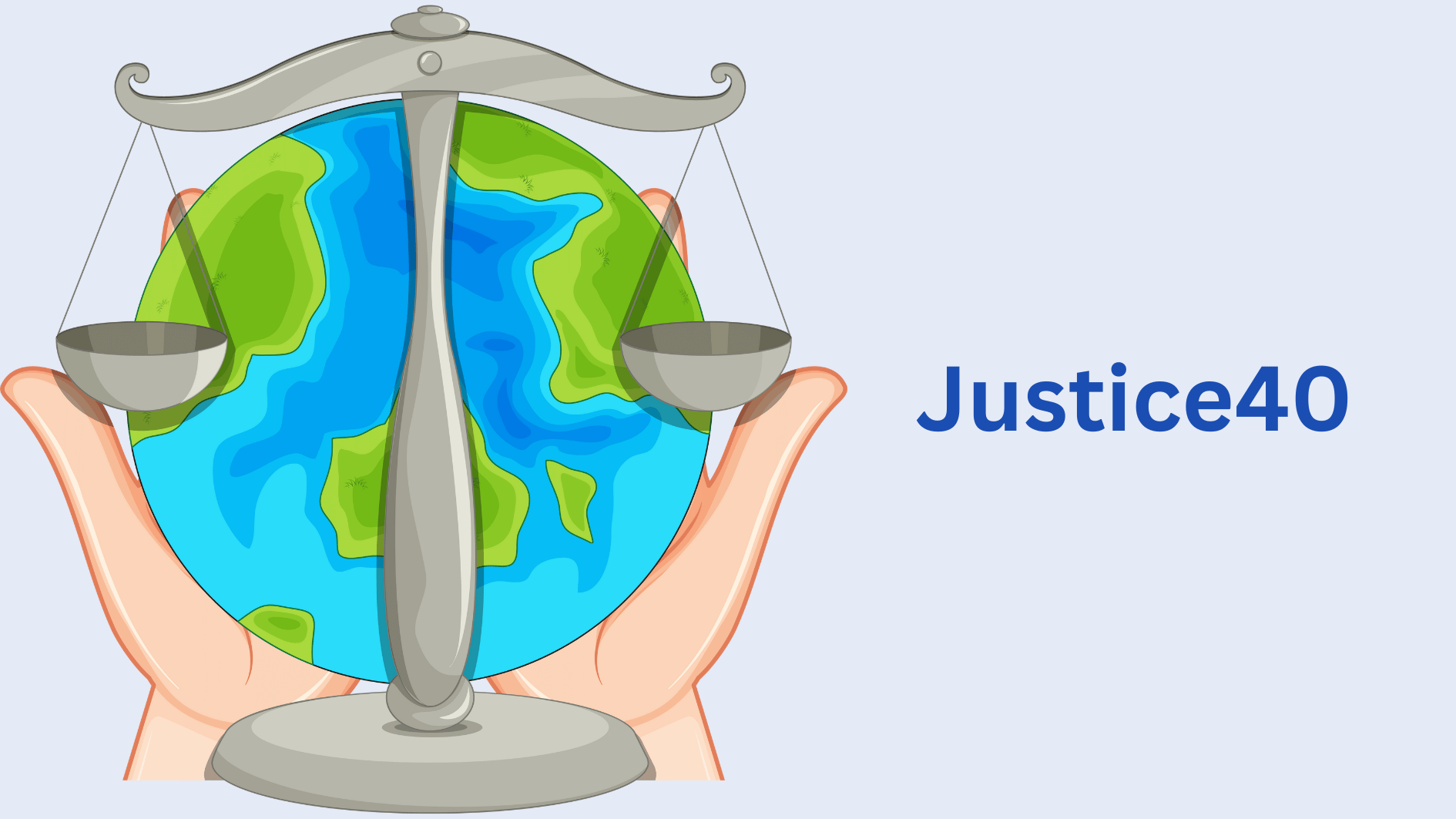Image source: Canva.com
The Justice40 Initiative is a groundbreaking federal program aimed at addressing environmental, social, and economic inequities in the United States. Launched by the Biden administration in January 2021, Justice40 seeks to ensure that disadvantaged communities benefit equitably from federal investments in clean energy, climate resilience, and environmental justice. The initiative is named for its ambitious goal: delivering 40% of the overall benefits of certain federal investments to communities historically burdened by pollution, underinvestment, and systemic inequities.
Key Goals of Justice40
Address Climate Change
By prioritizing clean energy infrastructure and climate resilience, Justice40 aims to help disadvantaged communities adapt to and mitigate the effects of climate change. This includes investments in renewable energy sources, energy efficiency programs, and technologies that reduce greenhouse gas emissions.
Advance Environmental Justice
Many low-income and minority communities are disproportionately impacted by pollution from industrial facilities, highways, and landfills. Justice40 directs resources to reduce pollution, improve air and water quality, and ensure safe, healthy living conditions.
Promote Economic Equity
Justice40 is designed to generate economic opportunities in communities that have long been marginalized. By creating jobs and supporting workforce development programs, the initiative promotes financial stability, career advancement, and social mobility within disadvantaged populations.
Strengthen Health Outcomes
Investments under Justice40 are targeted at improving health outcomes in communities with high rates of chronic illnesses, which are often related to environmental hazards. Initiatives may include expanding access to healthcare services, building healthier homes, and reducing exposure to environmental risks.
Enhance Community Resilience
Communities that face environmental and economic challenges are often less equipped to withstand extreme weather events and natural disasters. Justice40 aims to increase resilience through improved infrastructure, disaster preparedness programs, and resources that help communities rebuild after a crisis.
How Justice40 Works
The Justice40 Initiative works by requiring federal agencies to ensure that 40% of benefits from certain federal investments reach disadvantaged communities. The federal government defines disadvantaged communities as those experiencing high levels of poverty, health disparities, environmental burdens, and other systemic disadvantages. These communities are identified using a tool called the Climate and Economic Justice Screening Tool (CEJST), which combines data on environmental pollution, climate risk, and socioeconomic factors to help target Justice40 investments.
Agencies and Programs Involved
Several federal agencies are implementing the Justice40 goal through various programs, including:
- The Department of Energy (DOE) for clean energy investments.
- The Environmental Protection Agency (EPA) for environmental remediation and pollution reduction.
- The Department of Housing and Urban Development (HUD) for community resilience and affordable housing.
- The Department of Transportation (DOT) for improved public transit and infrastructure projects.
These agencies incorporate Justice40 goals by assessing their projects’ potential impact on disadvantaged communities and ensuring these projects include significant, tangible benefits for those communities.
Examples of Justice40-Funded Programs
Programs funded under Justice40 vary widely, from renewable energy initiatives to pollution reduction efforts. Some examples include:
- Clean Energy and Solar Programs: Funding supports community solar projects, solar panel installations for low-income households, and training programs for green jobs, helping disadvantaged communities access affordable, clean energy.
- Electric Vehicle (EV) Infrastructure: Expanding EV charging stations in underserved areas not only promotes cleaner transportation but also helps create jobs in manufacturing and installation.
- Water Quality Improvements: Programs that improve drinking water systems in communities with outdated infrastructure help reduce exposure to contaminants and promote public health.
- Climate Resilience Projects: Infrastructure improvements, such as flood prevention systems, protect vulnerable areas from the impacts of extreme weather events, helping to build long-term resilience.
Benefits for Disadvantaged Communities
Justice40 has the potential to generate widespread benefits in communities that need them the most. Key benefits include:

Improved Health and Well-being
By reducing exposure to pollutants, Justice40 helps reduce respiratory and cardiovascular diseases, particularly in communities located near sources of pollution.
Economic Growth and Job Creation
Justice40 funds are used to create green jobs and support local businesses, fostering economic growth and stability. This can include training programs for renewable energy jobs, boosting employment in economically depressed areas.
Energy Savings
Investments in energy efficiency reduce energy bills for low-income households, addressing energy insecurity and making homes more affordable and comfortable.
Climate Resilience
Justice40 builds resilience against climate change impacts by funding infrastructure that protects vulnerable communities, enhancing public safety, and reducing future disaster recovery costs.
Challenges and Criticisms
Despite its positive goals, Justice40 faces challenges. Some community advocates express concern that the initiative’s scope may be limited by available funding and bureaucratic hurdles. Ensuring that funds are allocated equitably and reach the communities most in need can be complex, and certain programs may lack the infrastructure to effectively administer these benefits. Transparency in tracking progress and accountability for the agencies involved are essential to the initiative’s success.
Additionally, some argue that Justice40’s current criteria for defining disadvantaged communities may overlook certain vulnerable populations. The Climate and Economic Justice Screening Tool, while effective in many areas, may not capture all the nuanced needs and environmental burdens faced by every community.
Justice40 and the Future of Environmental Equity
The Justice40 Initiative represents an important step toward environmental justice and social equity in the U.S. It reflects a recognition that economic, environmental, and health disparities are interconnected and that addressing these inequities is crucial to building a more inclusive, resilient society. By prioritizing communities that have long been left behind, Justice40 aims to drive meaningful, long-term change that benefits all Americans, helping to create a more equitable and sustainable future.
With ongoing support, refinement, and a commitment to transparency, Justice40 has the potential to serve as a model for inclusive climate action and social responsibility, shaping policies and programs that protect our planet while ensuring that every community has a fair chance to thrive.





